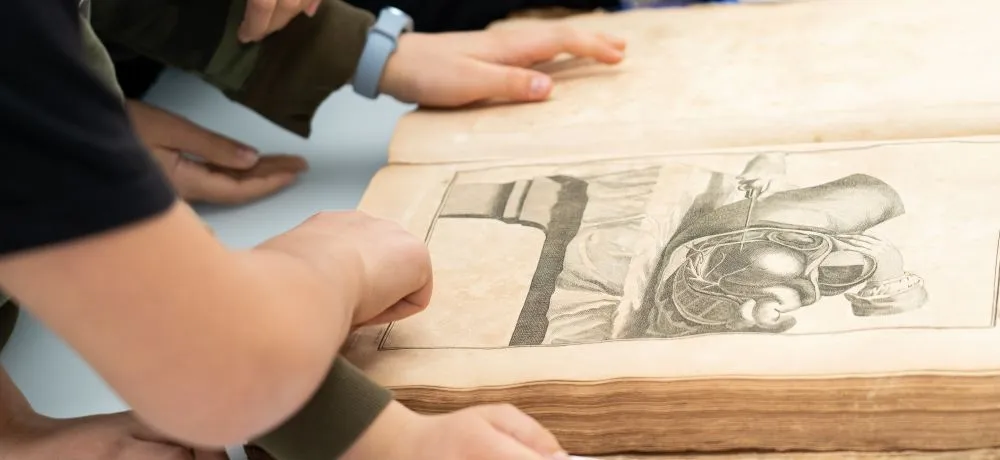
The Enlightenment Told Through Images
Seeing 15 volumes from the 1700s open on the big table makes quite an impression. Especially to the 23 12 year-olds who are more used to the language of social media than to the Encyclopédie of Diderot and D'Alembert. Yet excitement and interest was on the faces of the students of the Istituto Jacopo Barozzi of Milan, who in the rooms of the Bocconi University Library were able to see and touch live a rare version of the Encyclopédie, the first edition printed in Italy (but in French) and hear about its genesis.
Centuries of history and knowledge containing all the human knowledge of the time encapsulated in volumes that took years of tireless work to complete. And if it causes a slight, uncontrollable gasp to hear comparisons of Diderot and D'Alembert's Encyclopédie to Wikipedia, it is actually a compliment. Because the immense work created starting in the mid-1700s in France and completed in about 20 years, with enormous success among its contemporaries (“4,200 copies were printed between 1750 and the French Revolution, so many for the time,” says Cinzia Di Deo, Bocconi Library & Archives), contains in itself elements of modernity, such as the cross-references at the end of each chapter, which constitute the 18th-century version of the current links of the online knowledge colossus.
“Children at this age absorb a lot and have to take every possible opportunity to learn,” explains Chiara Sacchi, the Humanities teacher who accompanied the class, “moreover, one of the criticisms that is levelled at the Italian school is that it is too theoretical; with this visit we want to demonstrate the opposite.” There is, in addition, a whole issue about the way knowledge is transmitted: once with only paper media, the result of years of work and timely verification, now, with far superior means thanks to modern technologies, often with superficiality and without due depth. “We try to explain to them that verification of sources is fundamental, one should not stop at what appears on the surface. Wikipedia is very useful, we all use it, but at the same time anyone can write, with what expertise is not always clear. Works like the Encyclopédie, on the other hand, represented years of painstaking and skilled work,” the teacher adds. A valuable lesson for those who can grasp its message.
Which is also one of the intents of these initiatives aimed at schools of all levels that the University Library organizes, often at the request of the institutions themselves. “Our library and archives contain works of extraordinary value that should be shown and made known,” says Cinzia Di Deo. “Obviously depending on the interest and type of schools that come to visit we organize different itineraries, from real Campus Tours to more targeted events such as the Encyclopédie. There is also another very important aspect,” she continues, ”Bocconi is a real city campus, in the heart of the city. And it is important to make this reality known also and especially to the schools that share the same spaces and that do not know it yet.”